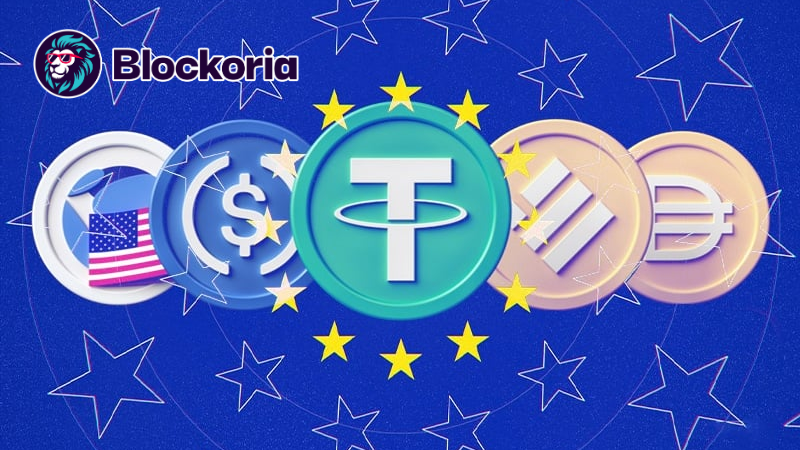
Stablecoins continue to grow and now account for 1% of M2, a key measure of the money supply. While this is a relatively small portion, the trend is clearly gaining momentum. There is $226.9 billion in circulation, and depending on valuation methodology, the figure ranges from $223.1 billion to $227.58 billion.
USDT and USDC remain the leaders, providing a significant share of liquidity in the cryptocurrency markets. Despite the volatility, their use continues to expand.
The M2 money supply in the US has grown again, reaching 2022 values. In the traditional economy, M2 includes cash, deposits and short-term financial instruments, and in the crypto sector, stablecoins fulfill a similar role. After the pandemic surge in M2, which amounted to $21.6 trillion, the demand for digital assets has increased significantly. Since 2021, the supply of stablecoins has grown tenfold, and it is predicted that they could reach $400$ billion by the end of 2025.
Stablecoins are not only in demand on centralized exchanges. The main drivers of growth include Solana and Ethereum L2, which provide a significant inflow of liquidity to DeFi, as well as TRON, which is strengthening its role in this segment due to an increase in supply by $55$ billion. Derivatives exchanges are also actively using stablecoins, with 44$ bn concentrated on them. Most of USDT and USDC remain in reserves, waiting for favorable conditions for trading.
Despite various restrictions, USDT continues to dominate the market, increasing circulation by $2.39 billion over the past month. Its total volume has reached 143.14 billion tokens and its daily trading volume stands at $61 billion. USDC is also gaining share, bringing its supply to 56 billion tokens, but its daily trading volume remains at $13 billion. In recent months, its share among the stablecoins has grown from 20% to 25%, but activity has subsequently declined by 28.36% due to waning interest in DEX on Solana. At the same time, USDT showed an increase in turnover by 15.47%, which confirms its demand and high capital velocity.
Crypto-dollarization is gradually becoming part of the financial system. The development of stablecoins raises a number of questions: whether their volume will reach $400 billion in the coming years, whether competitors will be able to squeeze USDT, and what will be the impact of regulation on the global spread of digital currencies. So far, digital analogs of traditional money are gaining a strong foothold in the global economy.



